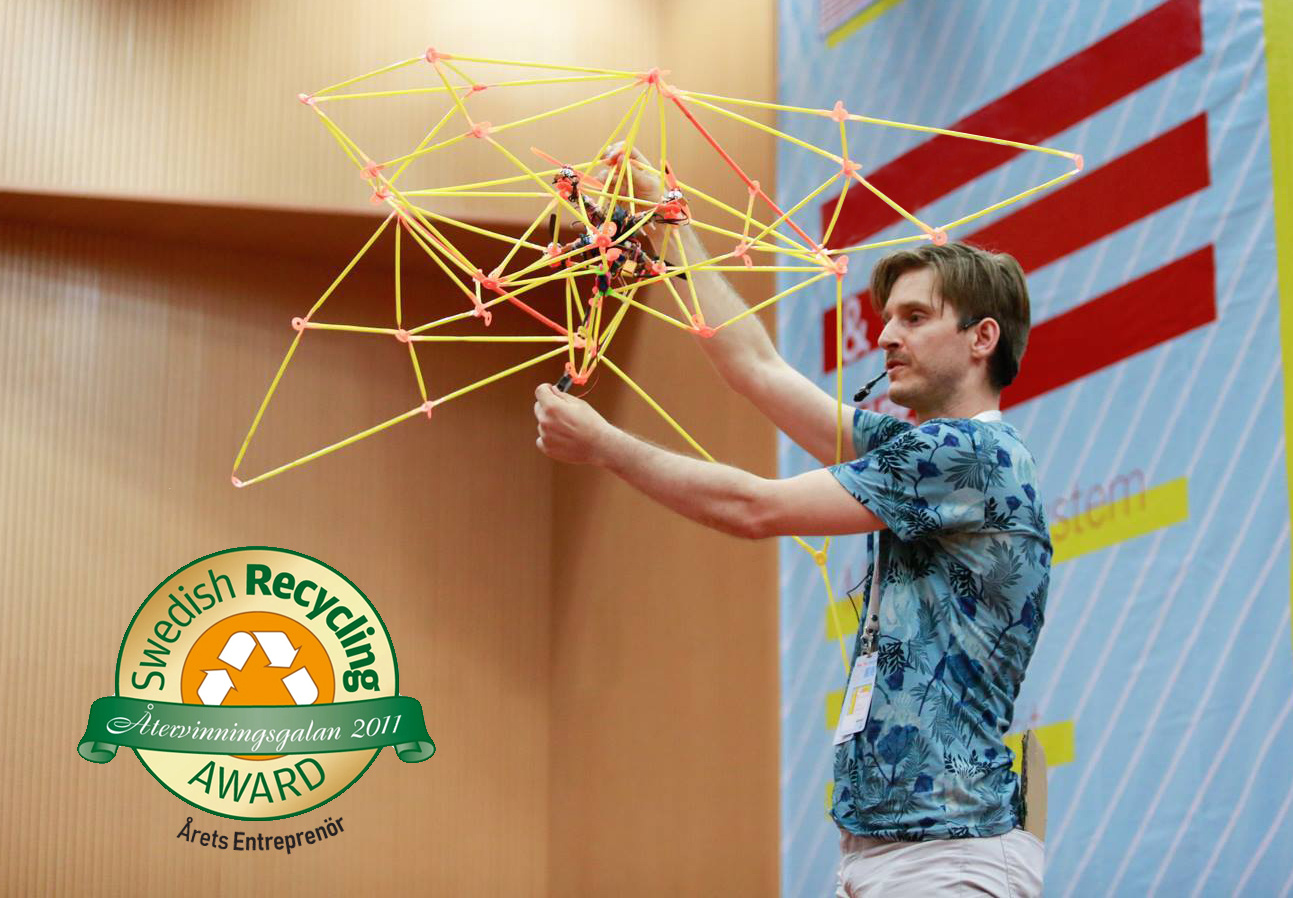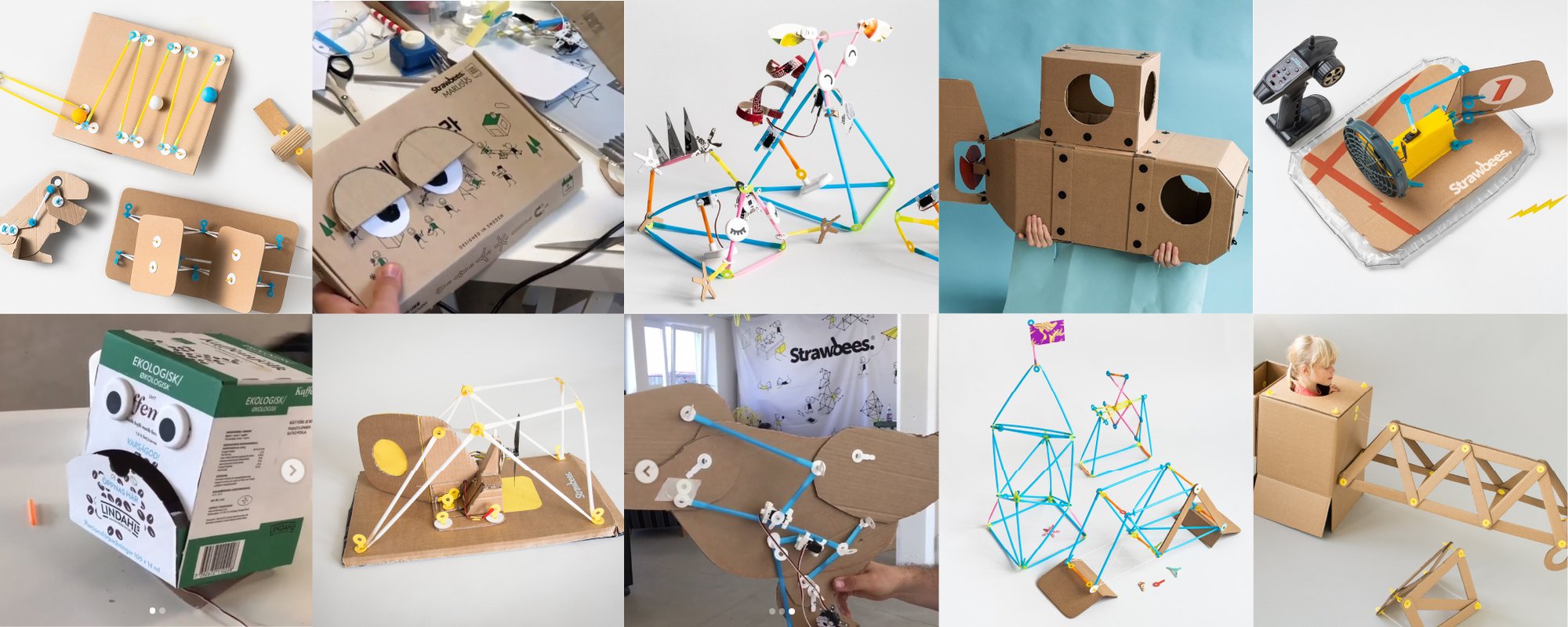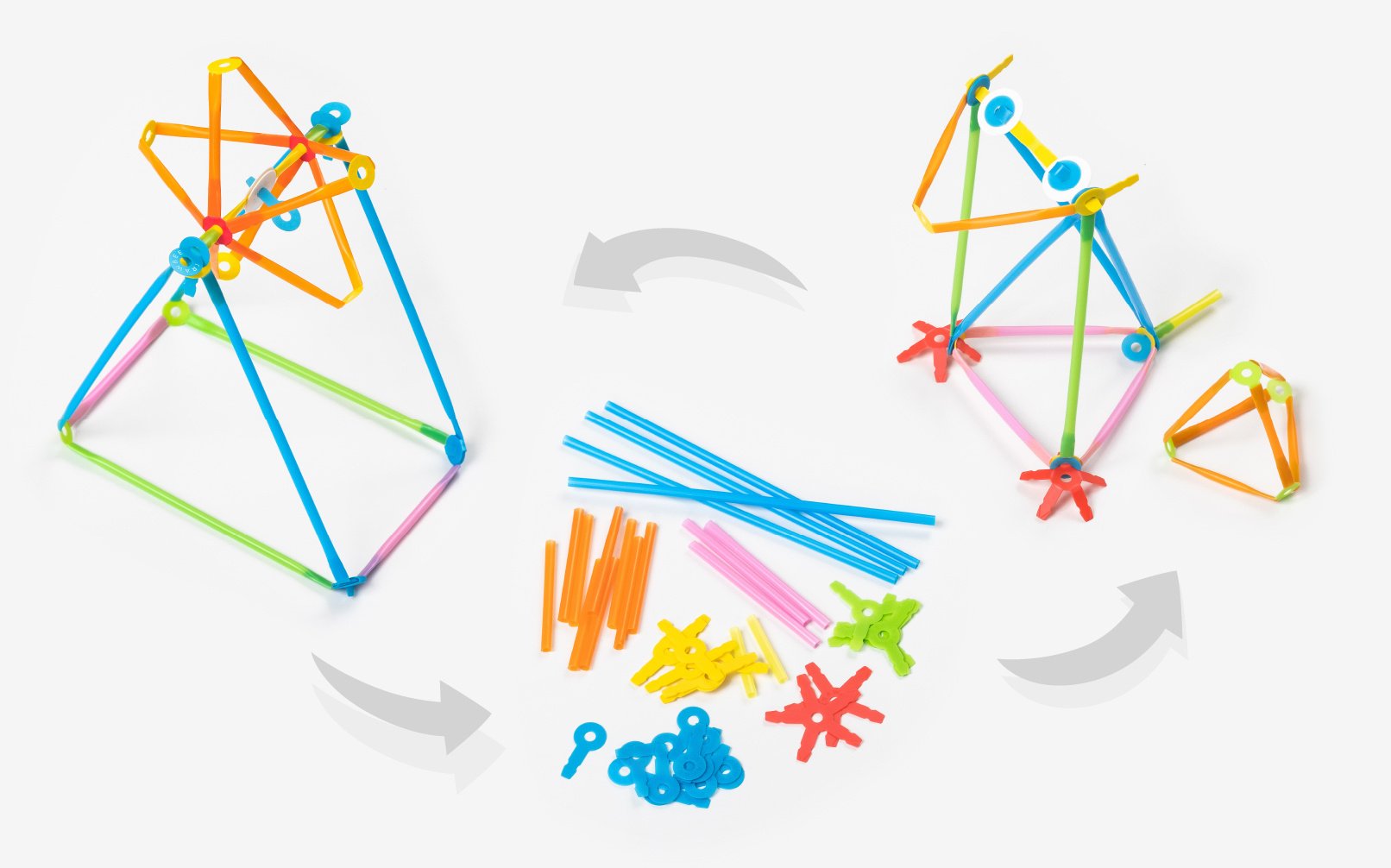Reduce, Reuse, Recycle
To aim for a closed-loop system is part of our DNA.
Strawbees was born by upcycling a single-use straw. We want to stay true to our roots. That’s why we make a continuous effort to reduce, reuse and recycle in different stages of the Strawbees lifecycle. We are also involved in research projects to find the materials of the future that will help achieve the goal of a circular economy.
Erik Thorstensson, our Chief Innovation Officer and inventor behind Strawbees, is a mechanical engineer specialized in environmental product design: “We are a company full of young aspirational engineers, environmentalists, developers, creatives and educators. To aim for a closed-loop system and to reduce, reuse and recycle is simply part of our DNA.”

Erik Thorstensson got awarded the ‘Entrepreneur of the Year Swedish Recycling Award 2011’, inspiring the next generation to reduce and prevent waste.
Our multi-use straws are designed to be used over and over again. The benefit of using high-quality plastic in the shape of a straw means we can use much less plastic and our structures become very lightweight. This way we optimize material usage by student per year and we can even make things that fly!
This aligns with the first principle of Environmental Responsibility:
Reduce!
Strawbees connectors and straws are easy to modify and durable. They can get bent, get wet and even put in the dishwasher. Strawbees can also be used with a wide range of upcycled materials like cardboard, plastic containers, and regular straws, adding value to material that otherwise would end up in the bin. In the end, you take your project apart and can start over again.
This aligns with the second principle of Environmental Responsibility:
Reuse!
Our own Strawbees building straws are studier, more durable and, like our connectors, made with 100% recyclable plastic. In Sweden, material recycling of plastic is at 44%, counting energy recycling towards it, it is higher. To make our kits easier to recycle we have chosen to use the easiest plastic to sort and recycle, Polypropylene (PP), for all components in the system. That way, when they are completely worn out you put them in the recycling bin.
This aligns with the third principle of Environmental Responsibility:
Recycle!

Sustainable tinkering
At Strawbees we are all about sustainable tinkering! Why? Because it’s reusable, modular and reduces the use of material such as tape and glue. Plus, once your project is done you can take it apart and start all over again.

Sustainability Station
Help us spread the word! Watch our video below on how to transform waste materials into usable building blocks; understanding manufacturing and waste management; learning about material properties and prototype solutions for environmental issues; and how to integrate sustainable practices.
Our Sustainability Station is where you can physically create your own Strawbees using household waste.
Multi-use Cycle
If you like the look of our cool Multi-use Cycle posters, download it here for your classroom.

Chalmers Industriteknik (Industrial Technology)
To find out about the additional research we’re currently conducting, all backed by Chalmers Industriteknik, an independent expert in material science, please email info@strawbees.com.

“Proud to partner with Strawbees. The focus of the research and development is exploring the company’s material science avenues including investigating the novel plastic fuser ‘closed-loop’ recycle innovation by Erik Thorstensson further and backing Strawbees material choices scientifically.”
Kent Rundgren
Project Leader, Chalmers Industriteknik

